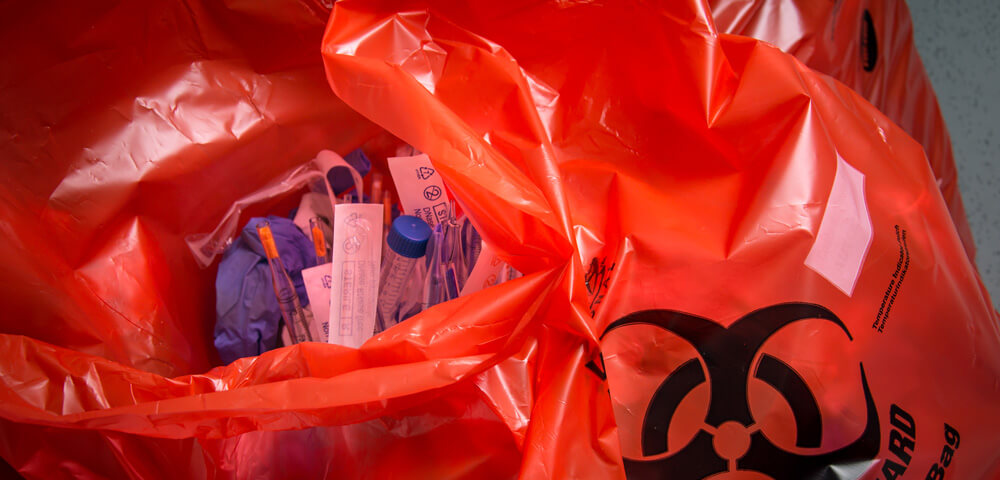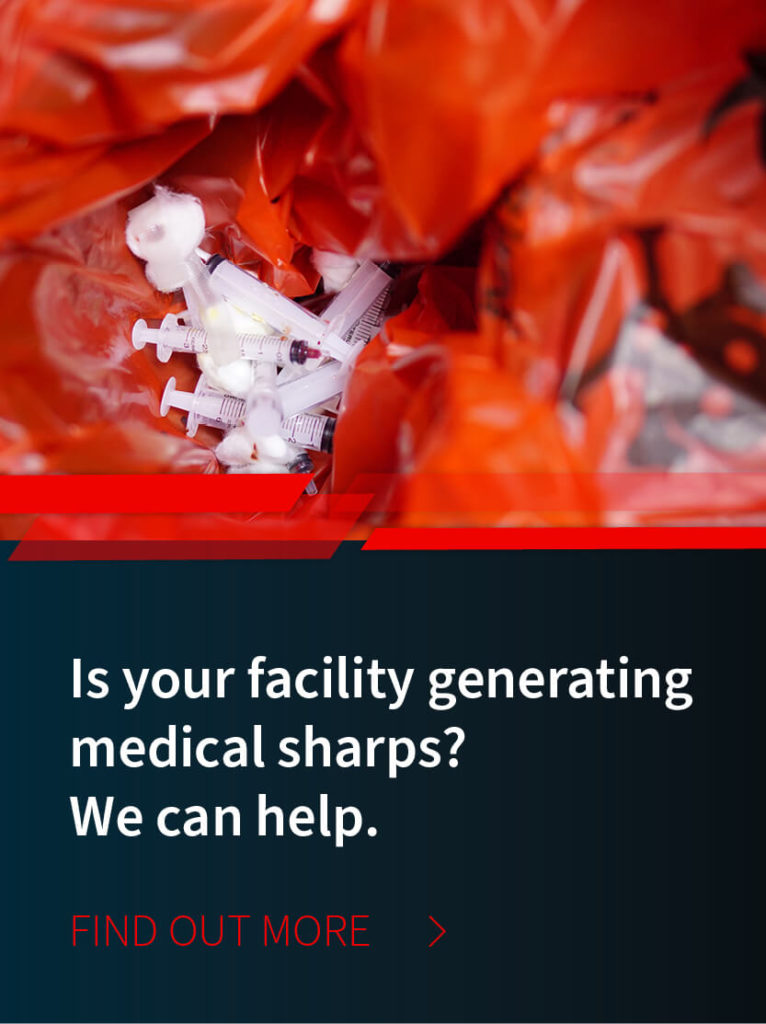
/ IN THIS BLOG
Treatment and disposal methods of medical waste relies on the type of waste. Hazardous waste treatment and disposal regulations are different than regulations for non-hazardous waste. All medical waste needs to be identified and segregated to ensure that proper management processes are involved, following federal and state guidelines.
01 / Who makes the Rules for Medical Waste Treatment and Disposal?
Who makes the rules for medical waste treatment and disposal? A number of agencies regulate medical waste management, including:
The Environmental Protection Agency (EPA)
Food and Drug Administration (FDA)
Occupational Health and Safety Administration (OSHA)
Resource Conservation and Recovery Act (RCRA)
State agencies, such as Departments of Natural Resources
Generally speaking, the process for handling and disposing of medical waste involves decontamination prior to disposal in a landfill through a number of processes, depending on the type of medical waste. Once decontaminated, medical waste residual materials can be treated as non-hazardous waste and disposed of safely.
Rules and regulations can get confusing, but you must follow both federal and state laws to remain in compliance. Failure to do so can result in huge fines and damage to reputation.
02 / Common Medical Waste Treatment and Disposal Processes
A number of methods to treat medical waste prior to disposal are accepted by governmental agencies today, but some have declined in use in recent years. While the federal government may approve of a disposal process, it doesn’t mean that all states do, so take the time to research what is permitted in your state prior to disposal. The medical waste generator is responsible for medical waste management and disposal processes from the moment of its generation to its ultimate disposal.
Incineration
Medical hospital waste includes infectious or biohazardous or ‘red bag’ waste and non-infectious waste, as well as general wastes from housekeeping and janitorial services. Required by most states, incineration takes place at a controlled facility capable of providing complete combustion with minimal environmental impacts. Incineration does not require any pre-treatment processes.
Heat processing of medical waste involves either incineration at an on-site or off-site disposal facility. Size of a medical waste incinerators for either depend on the volume of waste produced. States and counties may set limits on medical waste accumulation as well as storage time limitations, so be aware of those as well.
Incineration of medical waste results in the destruction of 99% of microorganisms and results in only a few lingering remnants. All incineration facilities must meet the guidelines of the EPA’s Office of Air Quality Planning and Standards and the Clean Air Act (CCA). Performance standards in regard to emissions guidelines in regard to nine air pollutants can be found in Section 129 of the CCA.
Autoclave
Autoclaves rely on thermal treatment of sharps, including needles, blades, syringes, and other similar materials. However, some types of medical waste cannot be decontaminated in autoclave processes, such as pharmaceutical and chemical wastes, which need to be treated through other methods of disposal and decontamination.
Autoclaves are capable of treating 100 to 4,000 liters of bulk waste materials. Using steam for treatment, autoclaves create a high-temperature, steam cleaning of medical waste for complete sterilization.
Once processed by an autoclave, sterilized materials become non-hazardous and eligible for disposal through standard practices. Unfortunately, not all medical materials can be heat processed. Pharmaceuticals and chemotherapy waste cannot be handled by an autoclave and must be treated using other methods of disposal and decontamination.
Microwave
Similar to the autoclave, microwave treatment uses high temperatures to penetrate and decontaminate medical waste. Microwave treatments work best on solid wastes that are not completely dry.
Microwave treatment operates similarly to the typical microwave oven by generating heat through the heating of the water molecules within a substance. Because microwaves depend on water in order to achieve sterilization, materials slated for microwave treatment must be shredded in some states and combined with water prior to treatment. The shredding process also decreases the volume of waste that must be taken to a landfill.
Steam Sterilization
A more cost effective practice involves steam sterilization as an alternative medical waste treatment that is also popular in the developing world. Used alone or as part of a hybrid solar steam sterilizer, solar heating destroys bacteria and disinfects waste via a solar cooker procedure. Temperatures reached during steam sterilization range 121°C to 132°C to render proteins needed for pathogenic proliferation harmless.
Steam sterilization is effective on medical equipment and tools that are resistant to moisture and steam, such as medical apparatus found on anesthesia or respiratory equipment. This method is also effective in decontaminating sharps containers and microbiological waste.[1]
Some types of medical waste that do not respond well to typical treatment practices can undergo chemical disinfection. Typically, the application of a purifying chemical will sanitize contaminated liquids like blood or urine that might be found on medical equipment or tools.
Chemical Disinfection
Chemical disinfection is a medical waste disposal process that deactivates liquid-based waste such as blood, urine, stools or hospital sewage, often on-site. The process usually involves shredding of any materials and treatment as close to the collection site as possible.
A number of chemicals can be used for disinfection processes, such as calcium oxide, sodium hydroxide, and chlorine, hydrogen peroxide, sodium hypochlorite, and Fenton reagent. Turn to state-by-state guidelines for guidance. Different regulations as determined by states can typically be found under the state’s Department of Environmental Quality or Natural Resources Departments.
Irradiation
Irradiation is another form of medical waste disposal that utilizes the use of gamma rays, mostly used on certain types of bacteria and other harmful microorganisms. However, this method is quite costly, functioning much like the irradiation methods used to treat cancer. Therefore, it is only typically used to treat types of hazardous waste.
Regulations can be wordy and confusing. If you’re uncertain or don’t know where to look for the regulations for medical waste management and disposal, turn to the experts.
03 / Turn to Experts for Medical Waste Treatment and Disposal
Never guess when it comes to medical waste treatment and disposal for your healthcare facility.
MCF Environmental Services understands all the intricacies of medical waste disposal. Our knowledgeable staff are well-versed in federal, state, and local regulations governing the collection, treatment, and disposal of medical waste.
We know and understand compliance requirements and follow best practices for proper medical waste and hazardous waste disposal needs, including certified drivers, ongoing training, and necessary permits and insurance coverage. Contact us today to learn more about our services in your state.
Robert Losurdo
President, COO








